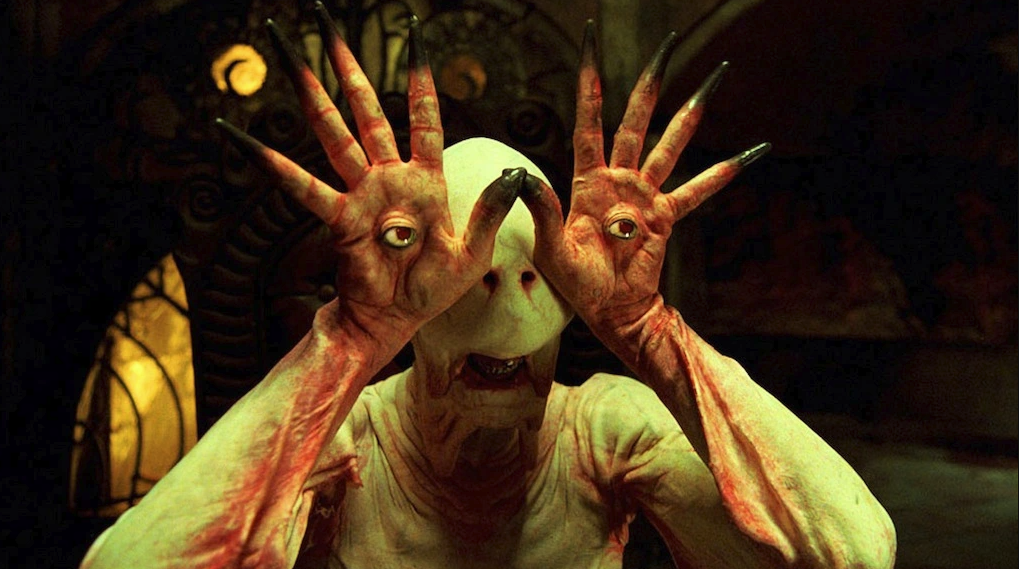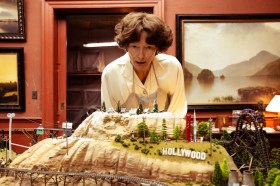Halloween is here – and while we don’t have the chilling autumnal vibes of our northern counterparts, there are dark and stormy nights aplenty to watch a good scary movie.
So what’s the scariest horror movie of all time? There’s no easy answer: what frightens us is deeply subjective. One man’s Psycho is another man’s Sharknado. That’s what gives the genre such a colourful history. Here are my top five frightening features:
Get Out – Jordan Peele (2018)
It’s become something of a cliché for a white horror fan to say Get Out is their favourite movie, echoing the shallow allyship of the movie’s antagonist. But the thing is: Get Out is a good horror film. Daniel Kaluuya plays Chris, a young Black man meeting his white girlfriend’s family for the first time.
The story hinges on our sympathy for Chris as he tries to navigate the seemingly well-intentioned awkwardness of the privileged Armitage family. We truly believe that he’s trying to keep his strained relationship intact, even as the family’s sinister intentions become gradually, terrifyingly clear.
Read: Nope review – Jordan Peele’s most entertaining film to date
Get Out is one of the rare horror films that gets scarier on a rewatch, as you recognise just how tightly the web is woven around Chris. With three acclaimed horror features under his belt, Jordan Peele has shown his signature to be a potent mix of cryptic but compelling heroes, impeccable pacing, and thorny world-building that will haunt you for years to come.
The Thing – John Carpenter (1982)
Though John Carpenter may be better known for launching the slasher sub-genre with Halloween, The Thing is his masterpiece. This remake of a mediocre 1950s creature feature follows a research crew in Antarctica who stumble across a mysterious alien parasite.
One of the goriest scenes in movie history has the titular Thing mutate inside a sled dog, exploding into a slimy tangle of frenetic tentacles that seek out new hosts among the men. The sound is as masterful as the visuals: Ennio Morricone’s music is bone-chilling, and the howl of the millennia-old Thing as it burns alive is unforgettable. Don’t lump it in with other alien movies, even the great ones: The Thing is driven by the worst of human nature.
Read: Laurie Strode, Halloween, and the legacy of the final girl
Kurt Russell’s pilot protagonist is soon fighting for his life, never certain which of his friends is an alien doppelgänger until somebody else gets ripped to pieces. The Antarctic backdrop is what makes The Thing so effective: the environment is as hostile as the monster. It’s unflinchingly bleak, both in the grotesque body horror and the nihilistic story. The men, the alien and the continent are equally ruthless in the battle for survival.
Relic – Natalie Erika James (2020)
Australian horror always cuts a little closer to the bone if you live here: the house in Relic is more likely to bear an eerie resemblance to your nanna’s place than some ornate Second Empire mansion from North America.
Aussies have made some incredible horror films this century: this list could easily be filled out with just The Babadook, Saw, The Invisible Man and The Loved Ones. Our horror tends to be a potent mix of unflinching violence and anxious politeness that isolates the heroes at their most vulnerable moments, and Relic does this exceptionally well.
Read: Classic horror films and scary hidden gems streaming now
Relic takes an unsettling spin on the haunted house. If you’ve read Mark Z Danielewski’s House of Leaves, this may be the closest film equivalent – but the women are better written.
Kay (Emily Mortimer) and her teen daughter go to stay with her elderly mum. Three generations in close quarters makes for thorny little conflicts, each of them confident they understand the labyrinthine house.
Far creepier than a malignant ghost, Relic’s haunting seems to be in the architecture itself. Natalie Erika James takes a more nuanced take on motherhood and ageing than we usually see in horror. She slices between reality and the uncanny like layers of wallpaper – the house falling apart with age as easily as a human body does. In a way, aren’t all houses haunted by the people you used to be?
Shutter – Banjong Pisanthanakun and Parkpoom Wongpoom (2004)
Shutter starts out simply enough: Jane (Natthaweeranuch Thongmee), a university student, accidentally hits a pedestrian while driving with her photographer boyfriend Tun (Ananda Everingham).
Soon, strange occurrences begin to plague the couple. Tun’s friends begin to die under mysterious circumstances. Jane realises there’s a more troubling link between Tun and the pedestrian than she believed, but now there’s blood on her hands too.
Shutter packs a twist you won’t see coming, and the ominous revelation will send more than just shivers down your spine. The motif of photography makes this a really interesting spin on a ghostly revenge story. Shutter deals with what moments we want to capture, and the truths we refuse to look at even when they’re staring us in the face.
CW: Viewers should be warned there is a rape scene in Shutter. It is not shown gratuitously.
Pan’s Labyrinth – Guillermo del Toro (2006)
Some may not count this as a horror film, but marvellously creepy creature actor Doug Jones’ turn as the Pale Man could be the most horrible monster in cinematic history.
In Pan’s Labyrinth we see the Spanish Civil War through the eyes of Ofelia (Ivana Baquero), an imaginative girl whose mother has recently married a fascist officer. Ofelia escapes from the conflicts into a world of fantasy that we’re never truly sure is real. Ofelia believes she can save herself through a series of terrifying adventures that the adults dismiss as flights of fancy.
Read: Cabinet of Curiosities, Netflix: Guillermo del Toro’s spooky shorts reviewed
Guillermo del Toro’s imaginative films never shy away from uncomfortable realities, and Pan’s Labyrinth is the most visceral but beautiful of them all.
Fairy tales are scary. Children have the capacity to understand fear profoundly, even and especially when they can’t control their situations. The horror in Pan’s Labyrinth doesn’t just come from the staggering Pale Man who hunts Ofelia – don’t watch it if you plan on sleeping that night – but the fear that nobody will believe she’s even in danger.





